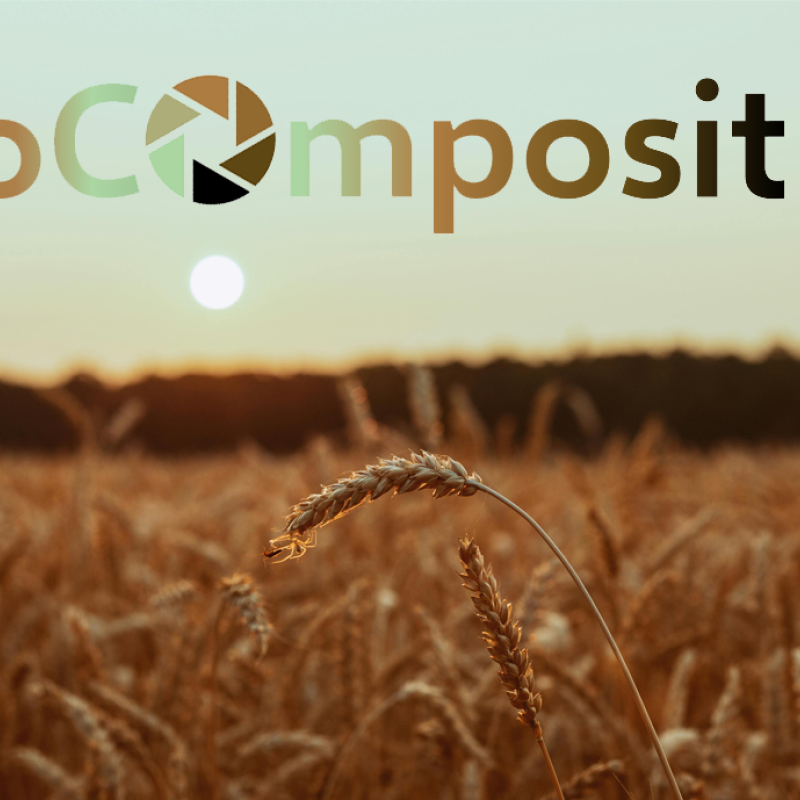Alice Budai
Research Scientist
Attachments
Curriculum VitaeBiography
Authors
Alice Budai Lucia Calucci Daniel Rasse Line Tau Strand Annelene Pengerud Daniel Wiedemeier Samuel Abiven Claudia ForteAbstract
Infrared and 13C solid state nuclear magnetic resonance spectroscopies and benzene polycarboxylic acids (BPCA) analysis were used to characterize the structural changes occurring during slow pyrolysis of corncob and Miscanthus at different temperatures from 235 °C to 800 °C. In the case of corncob, a char sample obtained from flash carbonization was also investigated. Spectroscopic techniques gave detailed information on the transformations of the different biomass components, whereas BPCA analysis allowed the amount of aromatic structures present in the different chars and the degree of aromatic condensation to be determined. The results showed that above 500 °C both corncob and Miscanthus give polyaromatic solid residues with similar degree of aromatic condensation but with differences in the structure. On the other hand, at lower temperatures, char composition was observed to depend on the different cellulose/hemicellulose/lignin ratios in the feedstocks. Flash carbonization was found to mainly affect the degree of aromatic condensation.
Abstract
No abstract has been registered
Authors
Elisa Lopez-Capel Kor Zwart Simon Shackley Romke Postma John Stenström Daniel Rasse Alice Budai Bruno GlaserAbstract
No abstract has been registered
Authors
Priit Tammeorg Ana Catarina Bastos Simon Jeffery Frédéric Rees Jürgen Kern Ellen R. Graber Maurizio Ventura Mark Kibblewhite António Amaro Alice Budai Cláudia M.d.S. Cordovil Xavier Domene Ciro Gardi Gabriel Gascó Jan Horak Claudia Kammann Elena Kondrlova David Laird Susana Loureiro Martinho A.S. Martins Pietro Panzacchi Munoo Prasad Marija Prodana Aline Peregrina Puga Greet Ruysschaert Lidia Sas-Paszt Flávio C. Silva Wenceslau Geraldes Teixeira Giustino Tonon Gemini Delle Vedove Costanza Zavalloni Bruno Glaser Frank G. A. VerheijenAbstract
Key priorities in biochar research for future guidance of sustainable policy development have been identified by expert assessment within the COST Action TD1107. The current level of scientific understanding (LOSU) regarding the consequences of biochar application to soil were explored. Five broad thematic areas of biochar research were addressed: soil biodiversity and ecotoxicology, soil organic matter and greenhouse gas (GHG) emissions, soil physical properties, nutrient cycles and crop production, and soil remediation. The highest future research priorities regarding biochar’s effects in soils were: functional redundancy within soil microbial communities, bioavailability of biochar’s contaminants to soil biota, soil organic matter stability, GHG emissions, soil formation, soil hydrology, nutrient cycling due to microbial priming as well as altered rhizosphere ecology, and soil pH buffering capacity. Methodological and other constraints to achieve the required LOSU are discussed and options for efficient progress of biochar research and sustainable application to soil are presented.
Authors
Ma Xingzhu Baoku Zhou Alice Budai Alhaji S. Jeng Xiaoyu Hao Dan Wei Yulan Zhang Daniel RasseAbstract
Biochar is a carbon-rich solid product obtained by pyrolysis of biomass. Here, we investigated multiple biochars produced under slow pyrolysis (235–800 °C), flash carbonization, and hydrothermal carbonization (HTC), using Scanning Electron Microscope—Energy Dispersive X-ray Spectroscopy (SEM-EDX) in order to determine whether SEM-EDX can be used as a proxy to characterize biochars effectively. Morphological analysis showed that feedstock has an integrated structure compared to biochar; more pores were generated, and the size became smaller when the temperature increased. Maximum carbon content (max. C) and average carbon content (avg. C) obtained from SEM-EDX exhibited a positive relationship with pyrolysis temperature, with max. C correlating most closely with dry combustion total carbon content. The SEM-EDX O/C ratios displayed a consistent response with the highest treatment temperature (HTT). The study suggests that SEM-EDX produces highly consistent C, oxygen (O), and C/O ratios that deserve further investigation as an operational tool for characterization of biochar products.
Authors
Alice Budai Liang Wang Morten Grønli Line Tau Strand Michael Jerry Antal, Jr Samuel Abiven Alba Dieguez-Alonso Andrés Anca-Couce Daniel RasseAbstract
No abstract has been registered
Abstract
presentation about circular economical projects in NIBIO
Abstract
No abstract has been registered
Authors
Sonja G. Keel Alice Budai Lars Elsgaard Brieuc Hardy Florent Levavasseur Liang Zhi Claudio Mondini César Plaza Jens LeifeldAbstract
No abstract has been registered

Division of Environment and Natural Resources
AgroComposit
AgroComposit: Biochar-compost composites for supporting site-specific soil agro-ecosystem functions and climate change mitigation

Division of Environment and Natural Resources
AgriCascade
Cascading recycling of organic N-sources with next-generation biochar fertilizer for Norwegian agriculture
